
Topics
Guests
- Teresa Casertanoglobal campaigns organizing coordinator with Communications Workers of America, or CWA. She worked on the new Puerto Rico report, “Pirates of the Caribbean.”
We turn now to “Pirates of the Caribbean.” That’s the name of a shocking new report on how the Santander Bank’s revolving door with Puerto Rico’s Government Development Bank exacerbated a fiscal catastrophe for the Puerto Rican people. Released by Hedge Clippers, the report reveals how two top appointees to the federal board overseeing Puerto Rico’s financial restructuring actually helped create the Puerto Rico debt crisis they are now in charge of fixing. The two appointees are former Santander Bank executives José Ramón González and Carlos M. García. For more, we go to Washington, D.C., where we’re joined by Teresa Casertano, global campaigns organizing coordinator with Communications Workers of America, or CWA. She’s also one of the managers of the Santander Bank organizing campaign.
Transcript
JUAN GONZÁLEZ: We turn now to “Pirates of the Caribbean.” That’s the name of a shocking new report on how the bank Santander’s revolving door with Puerto Rico’s Development Bank exacerbated a fiscal catastrophe for the Puerto Rican people. Released by Hedge Clippers, the report reveals how two top appointees to the federal overseeing board—the federal board, PROMESA, which is overseeing Puerto Rico’s financial restructuring, actually helped create the Puerto Rico debt crisis they are now in charge of fixing. The two appointees are former Santander Bank executives José Ramón González and Carlos M. García.
AMY GOODMAN: For more, we go to Washington, D.C., where we’re joined by Teresa Casertano, the global campaigns organizing coordinator with Communications Workers of America, or CWA. She’s also one of the managers of the Santander Bank organizing campaign.
Talk about this report, “Pirates of the Caribbean.”
TERESA CASERTANO: Hi. Good morning. “Pirates of the Caribbean,” the pirates in this story effectively are the Santander executives that Juan mentioned, José Ramón González and Carlos García. Santander, Banco Santander, is a global banking giant. It’s a Spanish bank. It’s headquartered in Madrid. And our report looks at the role of Santander in generating Puerto Rico’s public debt. And then, when it became unsustainable and Puerto Rico was not able to pay, the very same executives who were responsible for helping to generate that debt were then appointed to the PROMESA fiscal control board to determine how that debt would be restructured and what entities would be paid.
And so, our report looked at 90 debt deals, where Santander was either the principal underwriter or one of a team of underwriters, which resulted in $61.2 billion of public debt for Puerto Rico. And that is almost equivalent to Puerto Rico’s current debt load, which is $70 billion. And as an underwriter—an underwriter is essentially an arranger—Santander structured the bonds, purchased the bonds from Puerto Rico, and then sold them to investors. And in return for facilitating these transactions, they were compensated handsomely. They created $61.2 billion in debt and received issuance fees of about $1 billion.
In 2009, Carlos García, who was one of the architects of the debt deals by Santander Securities, he moved from Santander to become the head of the Government Development Bank of Puerto Rico. And so he moved from profiting off the creation of the debt deals to becoming the protector, the gatekeeper, the adviser to the Puerto Rican government, to the government entities that needed to structure new bond deals, and, effectively, became the approver and the selector of the underwriters who would facilitate these deals. And so, what some people have called him inside Hedge Clippers is the fox then guarding the hen house.
And as the president of the Government Development Bank, Carlos García brought in a team of current and former Santander executives who really had a grip on the Development Bank, on the Government Development Bank, from 2009 until 2012. And under his leadership, the Government Development Bank used a number of what some people call questionable, others call abusive or predatory, debt structures. And one example that we could use is a debt structure called the COFINA bond. And the COFINA bond was often used to refinance unpaid interest on previous bonds. And the COFINA bond was backed by sales tax. And so, effectively, these bonds were backed by the taxes, the sales tax on small transactions, by poor people and working people of Puerto Rico. And each time that those bonds were issued, Santander—
JUAN GONZÁLEZ: Teresa, I just want to clarify: González and García had both worked with Santander at one time or another, they then went over to the government side to actually be involved in the issuing of these, and now both of them—of many of these bonds, and now both of them are in charge of figuring out how to get Puerto Rico out of the mess that they helped create? But the amazing thing is that one of them was appointed by the Democrats, and the other was appointed by the Republicans. So it doesn’t seem that—both the Republicans in Congress and the Obama administration have no problem with the people who created the crisis now trying to figure out how to solve it.
TERESA CASERTANO: That’s exactly right. José Ramón González was—and Carlos García, at different times, were the head of the Government Development Bank and also top executives—you know, at other times, top executives of Santander Securities responsible for issuing the bonds. And so, yes, that is exactly correct. When the debt became unsustainable in 2014—
JUAN GONZÁLEZ: We only have about 15 seconds. Go ahead.
TERESA CASERTANO: —in 2014 and 2015, and the fiscal control board was appointed by the Obama administration, of the seven political appointees, those two executives were appointed to the fiscal control board to determine what entities will be paid under the debt restructuring.
AMY GOODMAN: We want to thank you very much for being with us, Teresa Casertano, the global campaigns organizing coordinator with CWA. This is Democracy Now! Happy birthday to Renée Feltz!

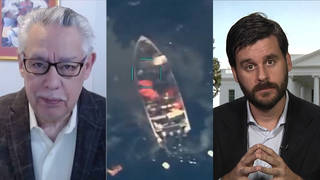
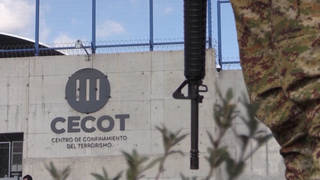
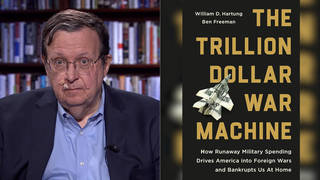
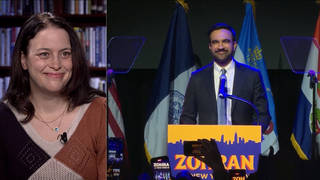





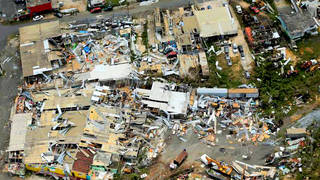
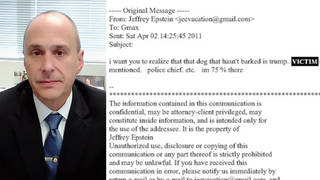
Media Options